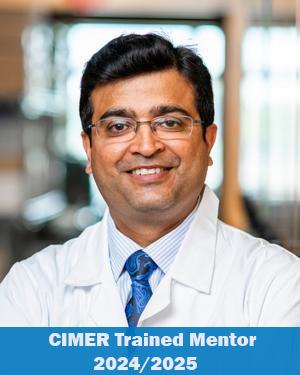Research News
04/15/2019
New Oxygen-Sensing Molecule Implicated in Cancer Development
The newly identified molecule senses oxygen within cells, altering pathways.

In an article published in the March 15 issue of Science, Abhishek Chakraborty, PhD, a new recruit in the Department of Cancer Biology, describes a newly identified oxygen-sensing pathway that may affect the development of cancer.
Dr. Chakraborty and colleagues from Dana-Farber Cancer Institute/Harvard Medical School, his previous institution, and their collaborators at the University of Oulu, Finland, discovered that an enzyme called KDM6A can sense oxygen within cells and alter biological pathways in response to oxygen levels.
Importantly, these changes occur independently of the widely studied hypoxia inducible factor, which historically has been considered the primary defense agent against oxygen loss.

Dr. Chakraborty’s team uncovered that under hypoxic conditions, loss of KDM6A induces chemical changes, called hypermethylation, to chromatin (complex of genetic materials and proteins found inside cells). In this way, KDM6A can act as an epigenetic regulator of cellular changes, including some that are central to cancer development. These paradigm-shifting findings suggest that studying KDM6A and related oxygen-sensitive enzymes may reveal new lines of anti-cancer therapy to pursue in the future.
These studies were performed in vitro in human muscle and breast cancer cells and supported by observations in preclinical and human tumors.
An expert in oxygen-sensing and kidney cancer research, Dr. Chakraborty was recruited from Harvard University to join the Center for Genitourinary Malignancies Research.
Top: Structural alignment of KDM6A and KDM6B to identify non-conserved residues that are relevant for KDM6A's oxygen sensitivity.
Bottom: C2C12 myotube differentiation assay performed by culturing cells at the indicated oxygen concentrations. Cells are stained to compare expression of the muscle marker MyHC in green.
Featured Experts
News Category
Related News
Research areas
Want To Support Ground-Breaking Research at Cleveland Clinic?
Discover how you can help Cleveland Clinic save lives and continue to lead the transformation of healthcare.
Give to Cleveland Clinic